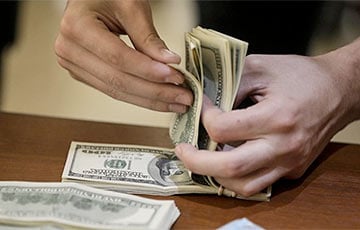Belarus Secures Position Among Leaders With Regard To Dollar’s Rate Growth
- 1.04.2016, 13:48
- 3,076

The official rate of the US dollar to the Belarusian ruble has grown by 8,42% (from18.569 up to 20.133 Br) in January-March 2016.
This is the third figure at the territory of the former USSR, writes BelaPAN news agency.
Tajikistan with a 12,58% growth (from 6,9902 up to 7,8696 somoni) and Ukraine — 9,24% (from 24,000667 up to 26,218056 hrivnyas) go ahead. Uzbekistan and Kazakhstan follow Belarus with 2,38% (from 2.809,98 up to 2.876,72 soms) and 1,06% (from 339,47 up to 343,06 tenges) correspondingly.
In Turkmenistan the dollar’s rate has remained the same (3,50 manats).
The dollar has got cheaper in Moldova — by 0,09% (from 19,6585 down to 19,6412 leys), Armenia — by 0,61% (from 483,75 down to 480,79 drums), Azerbaijan — by 1,11% (from 1,5594 down to 1,5421 manats), Georgia — by 1,13% (from 2,3949 down to 2,3679 lari), Latvia, Lithuania and Estonia — by 4,38% (from 0,9185 down to 0,8783 euro), Russia — by 7,24% (from 72,8827 down to 67,6076 rubles) and Kyrgyzstan — by 7,75% (from 75,8993 down to 70,0158 soms).
In the Moldovan Transdniestrian Republic, which has its own financial system, the US dollar exchange rate had remained unchanged since December 2012, but now increased by 1.80% (from 11.10 to 11.30 rubles).
In March Belarus got the second place with the dollar’s rate decrease by 6,28%, after Russia (9,96%). Then go Kyrgyzstan (5,71%), Georgia (4,44%), Latvia, Lithuania and Estonia (4,37% each), Ukraine (3,09%), Armenia (2,15%), Moldova (2,05%), Kazakhstan (1,93%) and Azerbaijan (1,49%). In Tajikistan and Turkmenistan the dollar’s rate has remained unchanged, in Uzbekistan it has grown by 0,88%. The weakening of the dollar is connected mainly with the growth of oil quotations and the strengthening of the euro.
In 2015 and 2014 Belarus got the third place at the territory of the former USSR with regard to the pace of growth of the official rate of the dollar to the national currency (by 56,70 and 24,61% correspondingly), in 2013 — the second (by 10,97%), in 2012 — the fourth (by 2,63%), in 2011 — the first (by 178,33%), in 2010 — the seventh (by 4,79%), in 2009 — the first (by 30,14%), in 2008 — the ninth (by 2,33%).
(The analysis has been made with the use of the central banks rates as of December 31 2015, February 29 and March 31 2016.)









